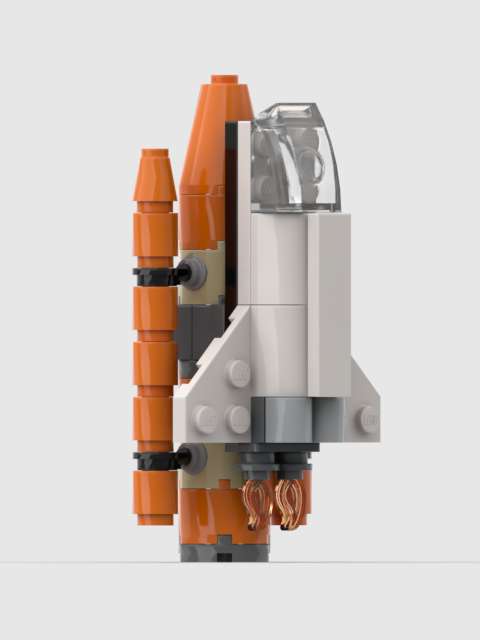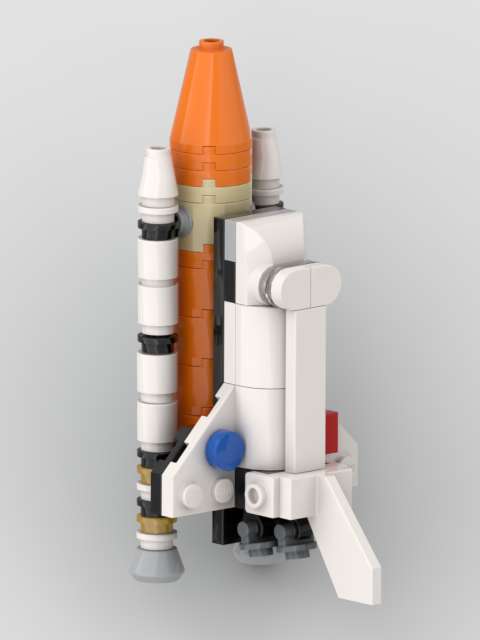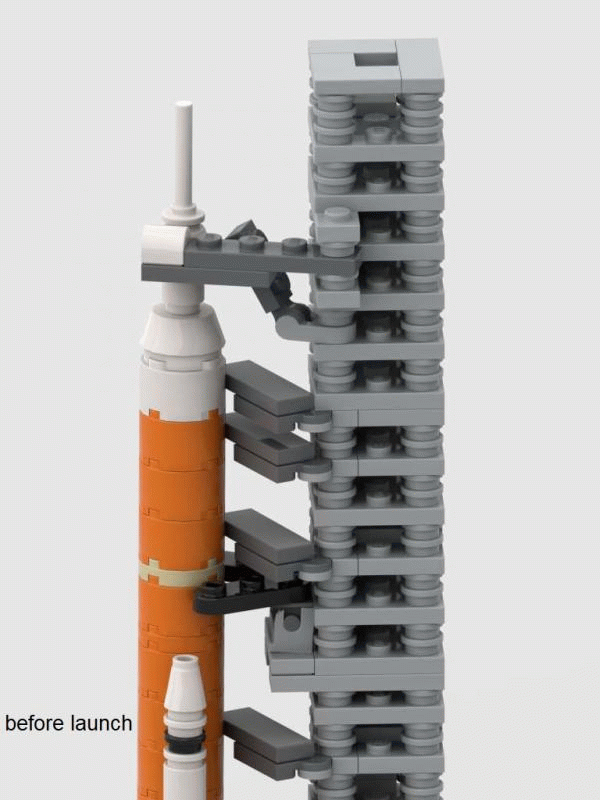|
Artemis I has used and Artemis II and III missions will use the Block 1 configuration (a transition upper stage and the Orion capsule with the escape tower).
|
|
Mobile Launcher 1 (ML1) with the following structure (service tower) is then used for these missions
|

|
|

|
Dimensions:
H= 6.8 cm, W= 2.1 cm, L= 2.1 cm, total bricks: 7
|
|
Dimensions:
H=20.2 cm, W= 7.2 cm, L= 6.4 cm, total bricks: 226
|
|
|
| Price:
|
|
studio
|
0.27
|
|
Bricklink (auto)
|
0.29
|
|
|
|
studio
|
15.77
|
|
Bricklink (auto)
|
10.08
|
|
|
From the Artemis IV mission onwards, the Block 1B configuration with a stronger upper stage will be used.
|
|
Mobile Launcher 2 (ML2) with the following structure (service tower) will serve for these missions
|

|
|

|
Dimensions:
H= 8.8 cm, W= 2.1 cm, L= 2.1 cm, total bricks: 9
|
|
Dimensions:
H=21.4 cm, W= 6.4 cm, L= 7.2 cm, total bricks: 250
|
|
|
| Price:
|
|
studio
|
0.43
|
|
Bricklink (auto)
|
0.48
|
|
|
|
studio
|
17.56
|
|
Bricklink (auto)
|
11.09
|
|










